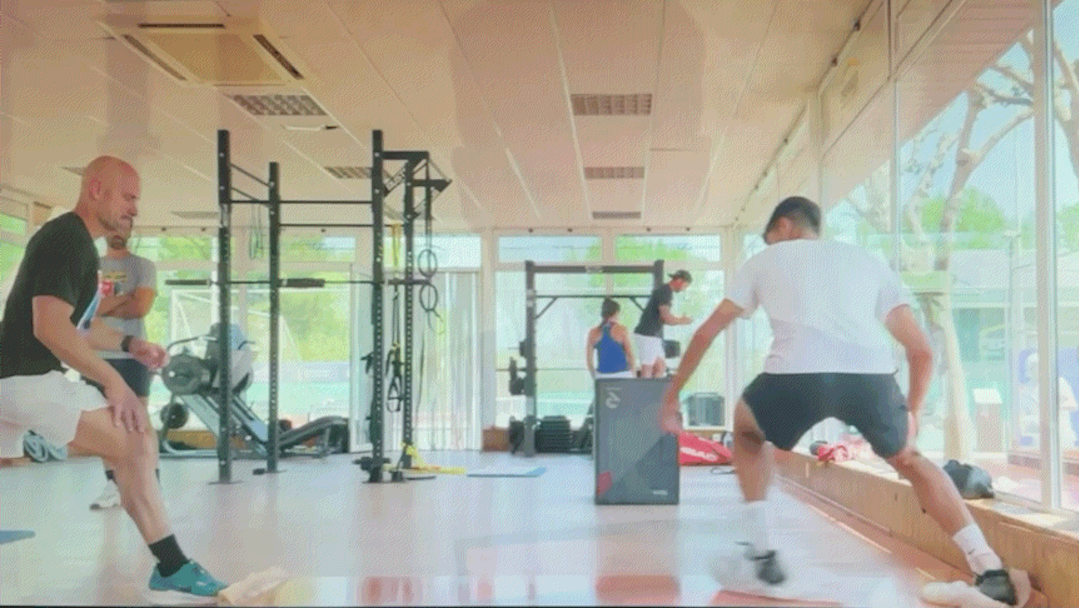One of the more annoying storylines from the Netflix docuseries “Break Point” was the hero narrative featuring Alexander Zverev during Season 2 Episode 4. My primary issue wasn’t because of the depiction of his comeback from a gruesome ankle injury suffered at the 2022 French Open. Instead, I objected to the villainous portrayal of Daniil Medvedev used to imply virtuous characteristics in Zverev. The whitewashing of his well-documented off-court issues doesn’t resonate with me.
Nevertheless, Zverev was shown performing three exercises that all tennis players should consider adopting to improve their performance. First up this week is an overhead medicine ball slam. I previously wrote about this exercise in “Slam Ball for Service Power.” However, in this clip, Zverev uses a medicine ball rather than a slam ball. His variation also inserts a vertical leap before slamming the ball to the ground.
His training partner obscures the video, but I think the movement seems reasonably clear in aggregate.

I regularly perform medicine ball slams in my home gym. Usually, I use a leather slam ball, which mutes the bounce. That forces me to bend low to retrieve the ball, which is an excellent functional tennis movement. On the other hand, the advantage of Zverev’s variation is that it requires the leg muscles to push up vertically. That is essential for service power.
Without the vertical extension, the exercise is performed by raising the medicine ball over the head and throwing it to the ground. In Zverev’s variation, he coils the body to leap into the air and slams the ball forward to his training partner.

Medicine Weight Training Ball (<- Sponsored Link)
In addition to satisfyingly whacking the ball on the floor, the dynamic movement of the overhead slam works on the same plane of motion as the kinetic chain involved with the tennis service motion. Catching the ball on the rebound or when a training partner returns it also develops the core stability necessary to hit groundstrokes.
Throughout this series, I have reiterated that we can all learn from observing and emulating what the best players do in tennis for their off-court training and to prepare for matches. One caveat I will add for the next few weeks is that the idea even applies to players who we don’t like very much.
Fiend At Court participates in the Amazon associates program and receives a paid commission on any purchases made via the links in this article. Details on the disposition of proceeds are available on the “About Fiend at Court” page.



